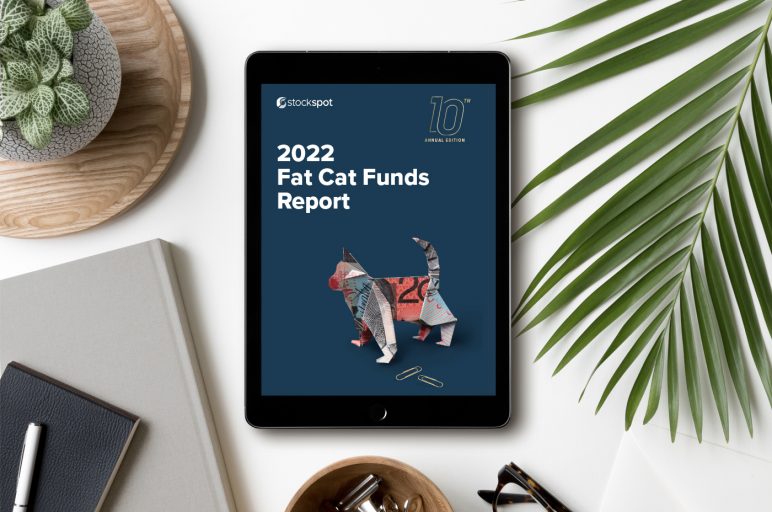You’re entering a golden phase of your life! Soon you’ll want to start drawing on your superannuation and live off your years of hard work and saving. You may want to travel the world or move homes for a different lifestyle.
What’s the best type of super fund for your 60s+?
Balanced or moderate super funds are often the best super funds for retirees. Both have more defensive assets like bonds and cash to smooth your returns and reduce the potential for large losses which becomes more important as you approach retirement and once you’re retired.
Making a change now can still have a significant impact on your final superannuation balance.
Check out our analysis of the best balanced and moderate super funds in Australia in our annual superannuation comparison, the Fat Cat Funds Report.
Why fees matter in your 60s
A typical Fat Cat Fund charges 2% or more per year in fees. Two percent doesn’t sound like a huge sum, but over decades the devastating impact of high fees is best seen.
Too many Australians are in a Fat Cat Fund and unaware of the impact that compounding high fees have on their long term savings.
Switching out of a fund charging 2% p.a. to one charging 0.50%p.a., a 60+ year old could increase the super they’ll have by $35,000.
3 tips to get the best superannuation fund in your 60s+
- Move into a balanced or moderate fund. As you move into your 60s and near retirement age, your main aim is to preserve the wealth you’ve accumulated and ensure it still earns a decent return
- Pay less than 1% in fees. Find a fund with low fees. Remember you could save over $35,000 simply by paying less for your superannuation.
- Be wary of funds with a high allocation to unlisted assets like direct property and infrastructure, as these can be difficult for the fund to sell if the market falls, which might be when you need the money.
Effects of super fees in your 60s+
| SUPER FUND CATEGORY | EXPECTED SUPER BALANCE AT RETIREMENT BEFORE FEES | FEE AMOUNT | EXPECTED SUPER BALANCE AT RETIREMENT AGE AFTER FEES | HOW MUCH OF YOUR RETURN IS LOST IN FEES |
| High fee fund (2% p.a. fee) | $462,432.92 | $47,890.31 | $414,542.61 | 10% |
| Low fee fund (0.50% p.a. fee) | $461,929.52 | $12,581.77 | $449,347.76 | 3% |
Find out who are the best performing moderate and balanced superannuation funds in 2022.
Two important questions to ask your super fund
- What are the total investment fees I’m paying?
Ask your fund:
“How much did I pay you paid last year in total including: administration costs, management fees, performance fees, transactional and operational costs, borrowing costs and property operating costs.”
Our research shows funds that charge total fees of less than 1% p.a. did better than those who charged more. If the answer is more than 1% p.a. your superannuation fund is more likely to become a Fat Cat Fund.
Super funds can be a tricky bunch and some make it difficult to understand how much you pay them to manage your money. Fee disclosure varies greatly between funds: many don’t show fees on their website and hide them deep in downloadable documents.
Don’t give up! Keep asking. They have to tell you. Investment performance comes and goes but fees cost you every year. It’s important you know how much you pay your super fund, it could mean the difference of hundreds of thousands of dollars in retirement.
- Do you use ETFs or index funds?
Our research shows that 100%^ of moderate super funds did worse than Stockspot’s low-cost index strategy after fees and taxes. Index funds are easy to access for superannuation managers, yet many choose not to because of the conflicts of interest in the industry.
FAQs
What is the best super fund for retirees?
The best super fund for retirees is typically a balanced or moderate fund that has a higher allocation to defensive assets.This helps to preserve the wealth you’ve accumulated as you start to draw down from it. Other factors like your savings outside of super will determine how much risk you can afford to take within super.
Can I cash in my super at 60?
Potentially, depending on the year you were born you can access you super when you retire and reach your ‘preservation age’.
How much super do I need to retire at 60?
The Association of Superannuation Funds of Australia (ASFA) estimates that you need $640,000 for a couple and $545,000 for a single person at retirement to support a comfortable lifestyle.
How much super does the average Australian retire with?
According to ASFA, the average 60 to 64 year old has $359,870 (male) and $289,179 (female) in their super
^ These findings are consistent with research from Finalytiq which found similar results in the UK: Finalytic, The Multi-Asset Fund Guide, S&P Dow Jones whose SPIVA research shows that 80% of active Australian share fund managers have underperformed the index over 15 years. S&P Dow Jones SPIVA Australia Mid-Year 2019




